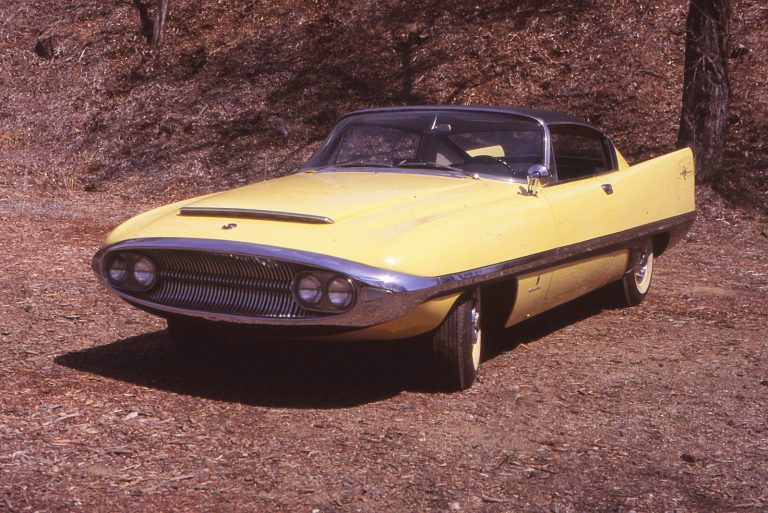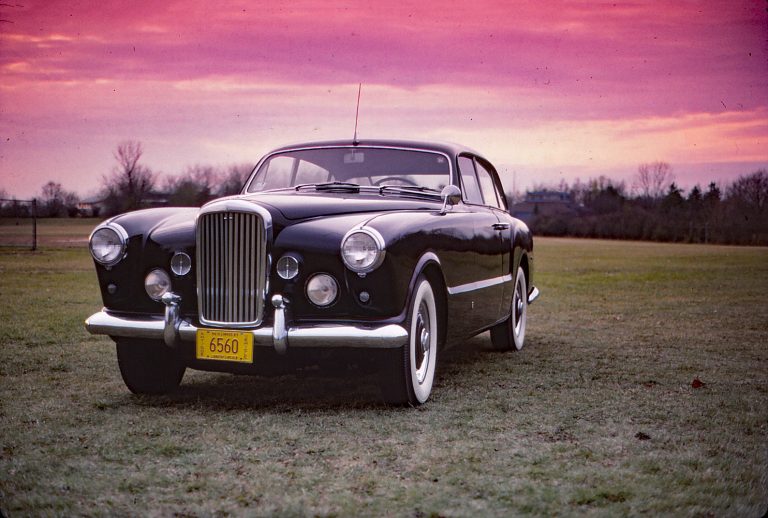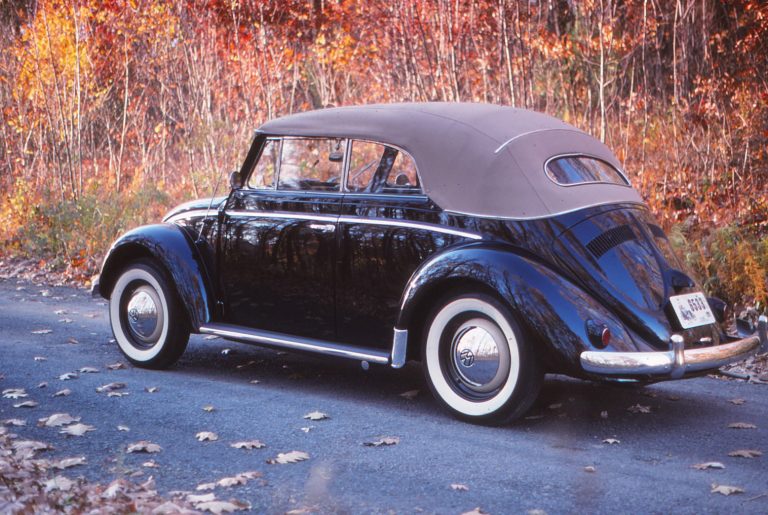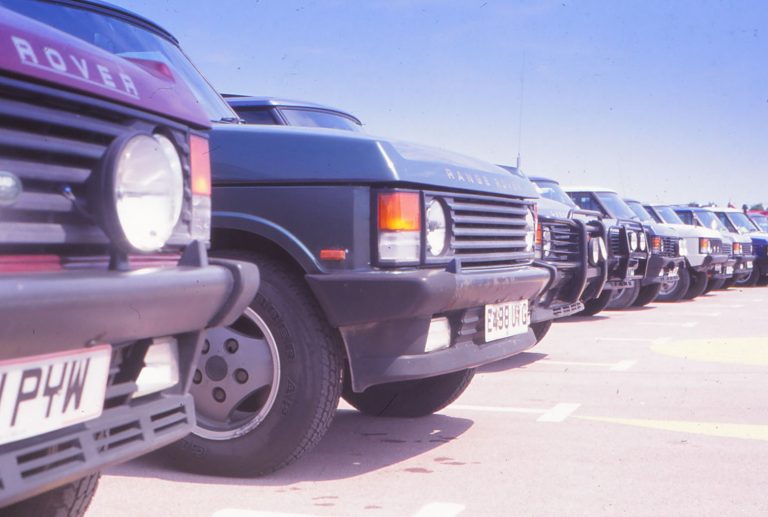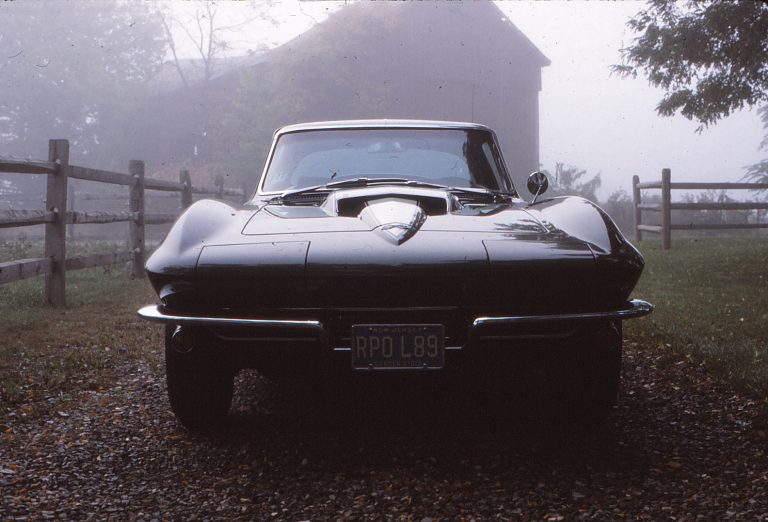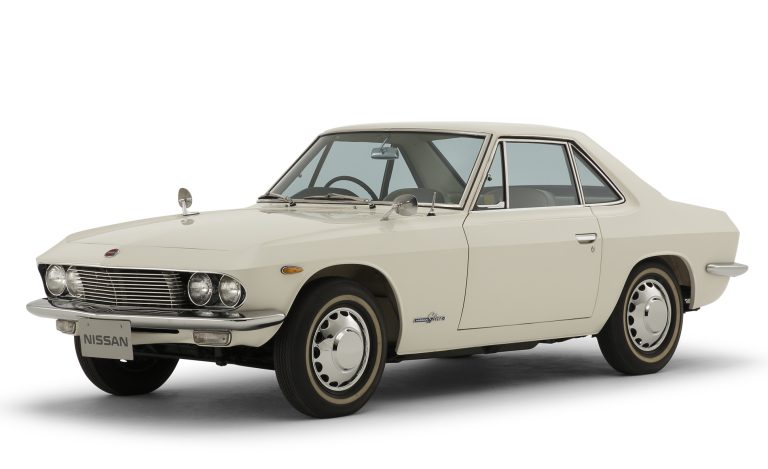Originally published in AutoWeek November 15, 1982
AC Aceca Bristol; photos by John Matras
AC was on a roll. Its roadster, the AC Ace, had taken the 1953 London Motor Show by storm, and was having a similar effect on race track competition during the 1954 season. What better way to keep the magic happening than by producing a grand touring version of the Ace?
The AC Ace, after all, was a Spartan contrivance, based as it was on the specials built by John Tojeiro for the English club racers. A good basis for a car, actually, with the body a Tojeiro interpretation of the Ferrari Barchetta and the frame/suspension freely borrowed from the Cooper-MG specials built by the father and son team of later Formula One and Mini-Cooper fame.
So it fell to an AC staffer by the name of Alan Turner to design the coupe. It debuted in 1954, dubbed the AC Aceca. Say ah-seek-ah. In addition to the fixed roof, cosmetic changes were made to the fender line, and real luxury touches were added: Roll-up windows, for example, and door handles on the outside.
Structurally, the AC Ace and AC Aceca were very similar, based on two parallel longitudinal three-inch diameter tubes. The Aceca then received a framework of steel tubing supplemented by tongue-and-groove ash framing. The door framework and that of the Perspex-windowed rear hatch is all ash. And over it all were placed hand-formed aluminum panels.
The suspension, identical front and rear, consisted of a lower A-arm with a transverse left spring serving as the upper locating member. Add Armstrong telescopic shocks and—that’s it. It was simple but revolutionary. It was fully independent at a time when independent front suspension was new. And even Ferrari didn’t have independent rear suspension on a street model until the 275GTB—that introduced in 1964, two years after the Ace/Aceca went out of production.
In the beginning, brakes were huge 11-inch Alfin aluminum drums front and rear, virtually filling the 16-inch center lock wire wheels. Front disc brakes became an option in 1957, along with separate master cylinders for front and rear circuits as a guard against total failure.
The better brakes were in part a response to the Bristol engine which became an option in 1956. It seems the two-liter AC six, in spite of its aluminum block and overhead cam cylinder head, was a bit gray in the whiskers. It was a 1919 design, originally producing 40 horsepower, but by 1954 it was producing 105 bhp. At that it was stretched tight, and the TR-2s and Austin Healy 100s were closing on the race track. The solution was the Bristol, nee BMW, 1971cc six.
For lovers of mechanical complexity, what a marvelous engine it is. What look like covers for twin overhead cams actually hide rocker arms for a complex OHV system. The intake valves, at 40 degrees from vertical, are operated by rocker arms pivoting outboard of the vertical pushrods, the motion carried over and around. The exhaust valves operate as follows: Vertical push rod to rocker pivoting outboard, around and under by means of the rocker to another pushrod crossing the head to another rocker which, pushed horizontally, pushes the exhaust valve set at 40 degrees from vertical. Tubes for the pushrods pass between the two banks of valve covers, and are visible from above.
With the mechanical chorus line on the intake side of the head, vertical intake passages coming down between the rocker banks were a necessity, leaving room only for tine 10mm spark plugs located centrally in the hemispherical combustion chambers. The head itself is of aluminum alloy.
The crankshaft is a four-main bearing affair with the cylinders siamesed in pairs. The object was a short crank, with les whip than a longer seven bearing crank. This, along with static and dynamic balancing and construction from aircraft steel, results in a bulletproof bottom end. Blocks were cast in chromium-alloy steel, not common cast iron, and dry sleeved with Brividium austenitic steel. Putting it simply, the Bristol engine is not biodegradable.
A special version of the Bristol engine was supplied to AC, the Type 100D2: Compression ratio, 9.0:1; three Solex downdraft single-throat carbs; 128 bhp at the 5750 rpm redline; and 122 lb-ft of torque at 4500 rpm. John Wright of Temple Hills, Maryland, owns a D2-equipped 1961 Aceca recently sampled by AutoWeek.
A push of the starter button rumbles to live [sic], and from under the hood comes the sound of that valve train in action—not unlike the full membership of the ILGWU at full stitch. Let the oil warm to where it shows on the Smiths gauge. Bristol engines might be nigh to indestructible, but only if you let oil warm first. Or so they say, and Wright isn’t willing test the conventional wisdom.
Sitting there it’s easy to Mitty yourself into an airplane. The cowl his high and rounded and with the engine’s BMW/Bristol aircraft heritage it makes almost the right noise.
But wait, airplanes don’t have gearshifts or pedal with the AC logo on them. So put the long lever into first and motor away. Shift to second—try to shift to second—where the heck is second? There it is, a small detent in a sea of neutral. There is little in the Bristol box to help find the next gear. The easiest is the optional Laycock de Normanville electric overdrive, and easy toggle flick away.
The ride is an odd combination of suppleness and stiffness, the effect of high spring rates and the independent suspension. The independent rear also produces a peculiar disjointed feeling over bumps, probably the result of the less-than-positive suspension locating ability of the leaf spring. Whatever, it feels weird.
The first turn taken at speed yields another surprise. With the engine located fully behind the transverse leaf spring up front, there’s a weight bias a couple of percentage points sternward. Throttle oversteer is as natural as a babe in mother’s arms, and just as easy; and with increased sideloading, the flexy suspension takes a set and stays put.
The way is clear so give it full boot. It takes full boot. The pedal swings through a long arc—it’s suspended from above and has a lot of linkage to open those three carbs. The tach needle swings quickly around the big 270-degree face and a rasping roar fills the cabin. Methodically pick second—it’s easier with practice—and repeat. And again third. And fourth. The Bristol engine propels the 2,100 pound AC Aceca through the standing start quarter mile in about 17 seconds. Zero to 60 mph takes eight-point-some seconds.
It didn’t come cheap. Then Bristol engine was a $1,000 option, and that over a base price of $4,500—in Eisenhower dollars, dollars that would buy 20 Cokes or mail 33 and a third letters each.
Time marches on and all that, however. The beginning of the end was Bristol’s 1961 decision to cease production of the inline six. Ken Rudd, English tuner and Ace Bristol racer ace, prepped the English Ford 2.6-liter six for the AC Ace and Aceca. It was lighter, faster and cheaper. But it didn’t sell. Of the 370 Acecas handcrafted by AC, 170 had the Bristol six and only eight were powered by the Ford 2.6.
Rescue for AC came in the form of one Carroll Shelby and two 221 cubic inch Fairlane engines. The Ace became Shelby’s famous snake, and though Ol’ Shel considered building a V-8 powered Aceca, it didn’t happen. The Cobra story began and closed the book on the AC Aceca.










